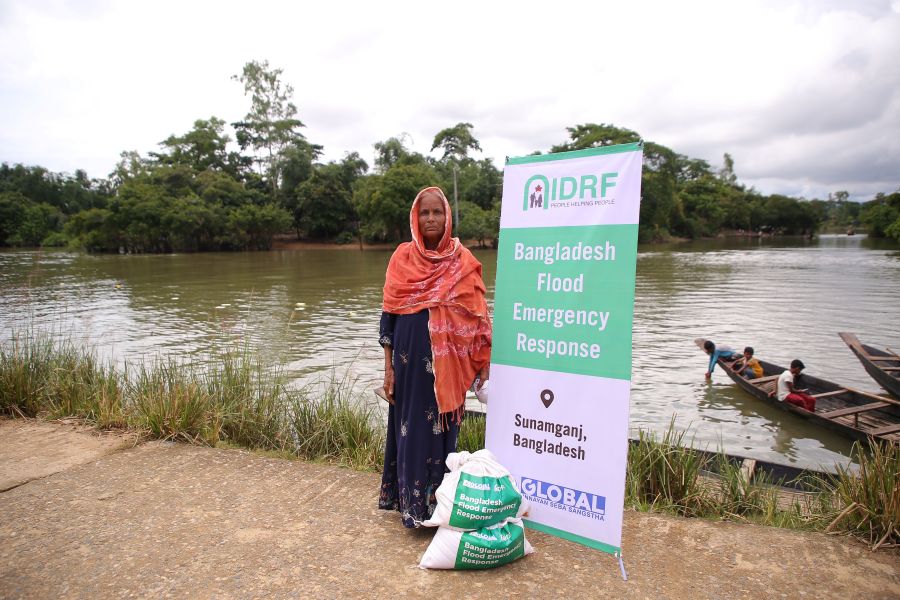
Case Study - IDRF - Flood Response 2022 - Warisun Begum

Purpose of Case Studies |
Case studies are an excellent tool used in the monitoring and evaluation of a project. IDRF requires a minimum of two case study submissions per reporting period to highlight some of the unique experiences and stories of IDRF’s project beneficiaries. A case study is more than a simple reiteration of the services a beneficiary received under a specific project. A case study should tell a unique story of a beneficiary and should demonstrate the effectiveness and impact of a project in addressing specific challenges outlined in the project agreement. A case study should explain the short and long-term benefits a beneficiary received as a participant of an IDRF project. Overall, case studies involve looking at one experience in-depth and showing how this experience relates to the broader picture.
When structured, developed, and written correctly, a case study should engage the reader by clearly describing the situational context and the challenge(s) faced by a particular beneficiary. It highlights the importance of the current project and why there is a need for such programming. When shared through social media, case studies are extremely useful in raising awareness about specific global issues and encourage the reader to act and learn more about a project.
Developing Case Studies |
There are many ways to develop and structure a case study. For this project, a case study should be framed as a story having three main components: (1) a main character; in this case, the main character would be a project beneficiary, (2) a problem; this should include a description of the challenge(s) experienced by that beneficiary, and lastly (3) a solution; the solution should be a description of how that beneficiary’s participation in this project improved or mitigated the identified challenges.
Case Study Framework |
As previously stated, the purpose of a case study is to inform, engage and mobilize the reader to take action, learn more and remain engaged in the project and the work of the organizations involved. The purpose of this document is to provide a framework for all case study submissions ensuring consistency and compliance with IDRF reporting requirements.
Please note: Case study submissions are required at all scheduled reporting periods outlined on the payment and reporting schedule of the project agreement. Each case study should be accompanied by a minimum of two high-resolution, full-length JPEG photo attachments. Please DO NOT copy and paste pictures into this template as this affects the quality of the photos. Please complete the following framework by providing a minimum of two case studies per reporting period.
CASE STUDY 1 | |
Project Title | Emergency Family Pack for Flood Victim in Bangladesh |
Country | Bangladesh |
Region(s) | Sylhet Division, Sunamganj District, Chhatak Upazila |
Sector | Food Security and Nutrition |
Project Beneficiary | Indicate the [name] and [age] of the beneficiary featured in this case study. Warisun Begum (Female), age 80 years |
Challenges experienced by beneficiary | Describe the unique challenges faced by the beneficiary specific to the project sector. [Please include this information in point form]
|
Project impact | Describe the how this project improved or mitigated the challenges identified by the beneficiary. Please describe the short-term and long-term benefits of this project. [Please include this information in point form]
|
Completed Case Study (minimum of 2 paragraphs) | Insert the completed full-length case study. Warisun Begum (80) lives in the Charar Char village under the Islampur Union in Chhatak, Sunamganj. After losing her husband, Warisun’s two sons managed all the expense of their family. One of her sons works as a boatman and her other son is a day laborer. Although they had to live in poverty with the minimal income of her sons, they were not unhappy. But their suffering became bigger when the flood hit their village in the middle of June this year. All of their properties got destroyed by the flood water along with their only living house. As a result, Warisun and her sons had to move to a nearby shelter where they lived for more than 20 days. During their time there, Warisun received some flood relief which has stopped now. Her son’s managed to build the roof of their house but had to cover it with the some sackcloth. Now they are barely surviving without proper food and accommodation. After hearing the news of flood donation from IDRF and GUSS, Warisun became really happy. She said, “During this difficult time, this large amount of food items will save my family from hunger. Thank you GUSS and IDRF.” She expressed her happiness by praying for GUSS and IDRF from the bottom of her heart. |
Beneficiary Quotation #1 | Include a direct quotation from the beneficiary describing the unique challenges experienced by the beneficiary.
“During this difficult time, this large amount of food items will save my family from hunger. Thank you GUSS and IDRF.” |
Beneficiary Quotation #2 | Include a direct quotation from the beneficiary describing the positive impact of the project in relation to the challenges described above.
|
Media | Provide a brief description of the case study pictures provided. Please ensure each case study is accompanied by a minimum of two pictures featuring the beneficiary participating in the project activities. The pictures were taken during distribution. Pictures are attached as Annex-6 |


